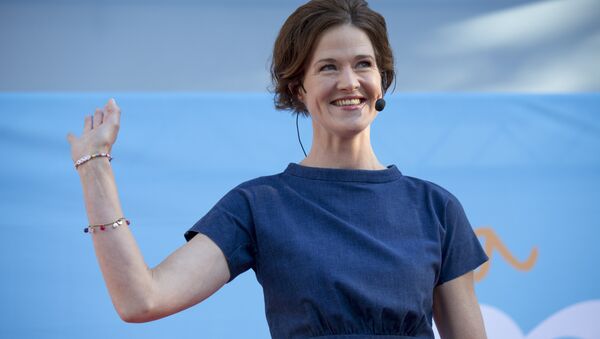Sweden is currently governed by a minority Social Democrat-Green coalition but in 2014, early in the party's tenure, it was thrown into crisis when the opposition Alliance's alternative budget proposal received more votes than the government's, thanks to the backing of the nationalist Sweden Democrats (SD).
As a result, in early 2015 an election was only narrowly avoided when the four center-right Alliance parties agreed not to vote for their own alternative budget in future votes, if it would threaten the elected government's proposal from being passed.
Sweden poll of polls (Nov 15)
— ChristianChristensen (@ChrChristensen) November 16, 2016
Social Democrats: 25.9%
Moderates (Conservative): 22.6%
Sweden Democrats (Far-Right): 19.8% (yellow line) pic.twitter.com/QqT7GZVyqZ
The deal, known as the December Agreement, fell apart a year later however, but on Thursday, January 26, leader Anna Kinberg Batra threatened to submit another Alliance budget proposal, which could lead to a repeat of the 2014 crisis.
The December Agreement also stopped the far-right SD from holding the balance of power, however Kinberg Batra has suggested that she would be willing to talk to the nationalist and the far-right party have said they would be willing to support an alternative budget.
"We should not allow ourselves to be hindered by the support of other parties. In matters where it is possible to reach an agreement I don't think that we should not talk to SD. I want to break the lock on them because of the parliamentary situation we have. But we will not negotiate a budget with them," Kinberg Batra said in a recent interview.
Magnus Ryner, professor of international political economy at Kings College University in London, said that in order to understand this current situation, you must look at the history.
"The historical context is that Sweden has had two completing blocs, all are competing for power, you have the socialist bloc and then the non-socialist parties. What has happened over the last 10 years is the far-right, who have links to the fascist movement has grown and has over 20 percent of the electorate. They are making it hard for these two blocs to form a government and it's an interesting comparison to the Danish situation," Professor Ryner told Sputnik.
Why dont 3 million of use emigrate to Sweden we can support Swedish Social Democrats and make sure left stays in power for decades. https://t.co/VezGKEPubz
— Matthew Ravenhill (@MatthewRavenhil) November 11, 2016
"Kinberg Batra's initiative is to take on policy rather than have an election, she does not want to join forces with the far-right or establish a government with them, but needs their help tactically if they are to topple the current government. Kinberg has made her proposal an appealing one to the far-right by offering a tougher approach to social integration polices for migrants and concentrating on security.
"There is a certain amount of xenophobia in Sweden due to the refugee crisis, and Kinberg wants to capitalize on this. There are high levels of unemployment and her proposal is to try and reduce this. This is appealing to the conservatives and the far-right."
"We want to have a temporary refugee pause" tweets largest party of opposition Alliance in Sweden. No word how it plans to "pause" causes.
— b9AcE (@b9AcE) April 28, 2016
The far-right Sweden Democrats are becoming the biggest political force in the country, according to recent opinion polls. It is for this reason that Kinberg has decided they are a key strategic party. However, according to Prime Minister and Social Democrats leader, Stefan Lofven, he believes this alliance between the far-right and the Sweden Democrats could damage Kinberg and he thinks she has lost her political compass.



